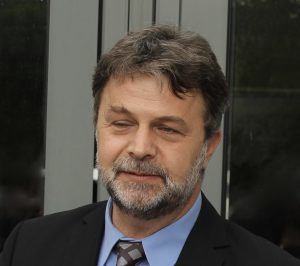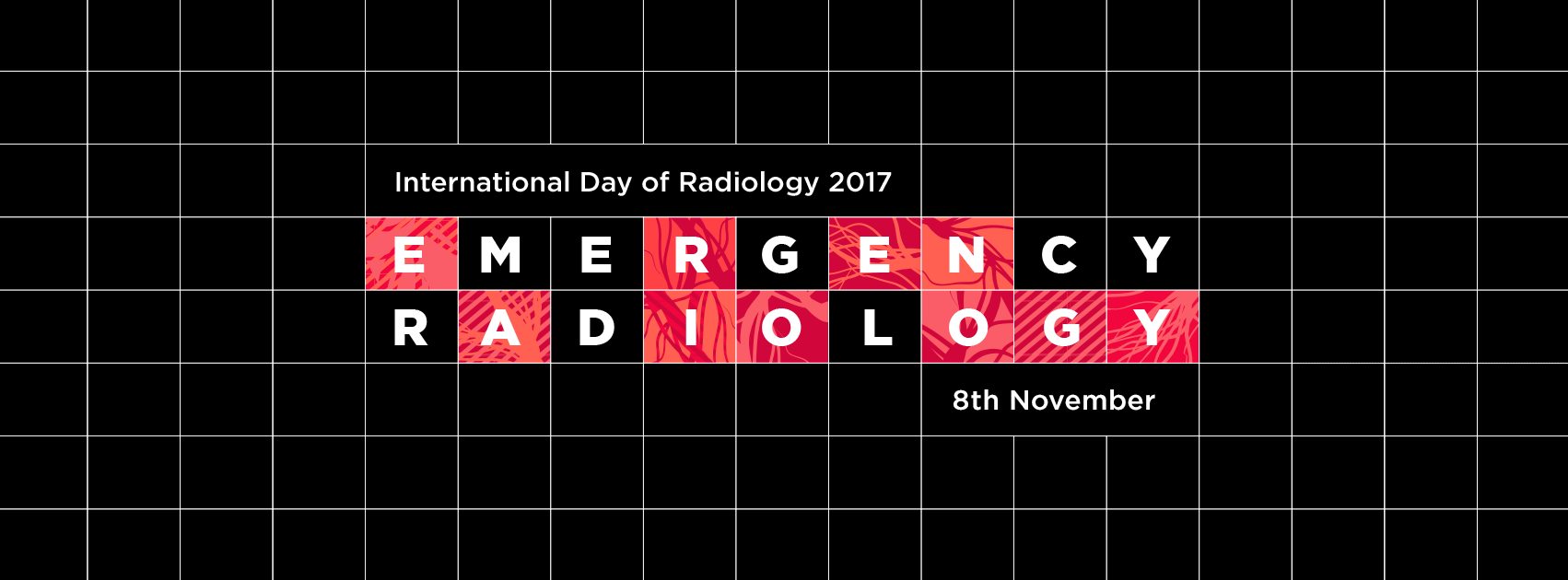Shortages of medical staff and equipment pose challenges in many emergency departments, says Romanian radiologist
This year, the main theme of the International Day of Radiology is emergency radiology. To get some insight into the field, we spoke to Dr. Radu Baz, an associate professor of radiology and head of the radiology department at Clinical County Hospital of Constanta, Romania.
European Society of Radiology: Could you please describe the role of the radiologist in a typical emergency department in your country?
Radu Baz: The radiologist is one of the most important members of emergency-service teams in Romania’s major hospitals. Radiologists here must examine and formulate rapid results for a large number of patients.
Because many emergency hospitals don’t have radiology imaging in emergency departments, radiologists dictate cases from the radiology department on emergency devices. In just one 24-hour period radiologists in our department dictated 220 x-rays, 70 ultrasounds and 45 CTs.
ESR: What does a typical day in the emergency department look like for a radiologist?
RB: Shifts start at 8:00, 14:00 and 20:00. During the morning and afternoon shifts there are three radiologists for conventional radiography, CT and MRI; ultrasound examinations often are conducted by the colleague responsible for conventional radiography. In most emergency hospitals, there are two radiologists on call: one who provides ultrasound and standard radiological assessments, and another for emergency CTs.

Dr. Radu Baz is an associate professor of radiology and head of the radiology department at Clinical County Hospital of Constanta, Romania.
Imaging (e.g. radiographic, CT and MRI) examinations are performed by radiology technicians or nurses, often under the direct supervision of physicians, who prioritise all cases. Physicians perform ultrasound examinations. Images are immediately transmitted to the hospital network for the use of clinicians and emergency physicians. Radiologists interpret images immediately from the x-ray console or from work stations in the reading room. Also, radiologists review complex cases in detail with clinician colleagues to assure proper case management.
ESR: Teamwork is crucial in an emergency department. How is this accomplished in your department and who is involved?
RB: Yes, indeed. Teamwork is essential in an emergency department. Direct and immediate collaboration with radiologists and their clinician colleagues helps us get through difficult cases. There often are situations when we call to ask advice from a radiologist colleague or ask to examine images while collecting clinical data. Also, there often are situations when we simply need to consult with a clinician on a case for a more in-depth approach.
ESR: How satisfied are you with the workflow and your role in your department? How do you think it could be improved?
RB: Work flow often suffers because of insufficient emergency-service triage and the lack of subdivisions for trauma, nontraumatic, medical-surgical, emergencies and paediatric cases. Therefore, radiologists must perform triage and prioritise patients. Last but not least, it is difficult to request for x-ray and ultrasound examinations at the same time because the radiologist doesn’t know where to go first. Therefore, considering the large number of ultrasounds required, it would be a good idea to have a radiologist colleague dedicated to ultrasound examinations in the emergency department. The biggest problem is the shortage of medical staff.
ESR: Which modalities are used for different emergencies? Could you please give an overview sorted by modalities?
RB: Digital radiology is used as a first-line exam in osteoarticular and cardiothoracic emergencies. Ultrasound represents the basic imaging exam in abdominal and pelvic lesions, as well as in traumatic or nontraumatic surgical emergencies. Of course this depends on the clinical-biological status of the patient and the suspected diagnosis. Musculoskeletal ultrasonography also is used in emergency departments. Most major hospitals in our country are able to perform CT examinations around the clock in emergency departments (on 4–16 slice CTs and customised paediatric protocols) for politraumatised patients, neurology patients, and patients with nonspecific chest pain or acute abdominal pain.
Unfortunately, MRI examinations in the emergency department, particularly in neurological or musculoskeletal emergencies, are limited to only a few hospitals in the country due to shortages of equipment and staff. In fact, there are no hospitals in Romania that can provide the emergency department with MRI investigations around the clock. For the same reason, there are even fewer Romanian hospitals where diagnostic and interventional angiography can be performed at all times.
ESR: Is teleradiology an issue in emergency radiology? If yes, how so, and how often is it used?
RB: In our country, teleradiology is not fully implemented. There are systems for transmitting digital radiographic images to servers within hospital units, through which clinicians in the same unit can view the radiological images to achieve radiological, image-result correlation and facilitate interdisciplinary consultation.
Due to insufficient equipment, teleradiology services that permit doctors to be on call at home are only possible in a small number of medical centres.
ESR: Are emergency radiologists active anywhere other than emergency departments? Do they have other nonemergency roles, or other emergency roles in other departments?
RB: Emergency radiologists also perform nonemergency imaging services. They can perform conventional radiography, ultrasounds, CTs and MRIs, in any context.
ESR: Do you have direct contact with patients and if yes, what does it entail?
RB: Generally speaking, in conventional radiography, CT and MRI departments, patients come into direct contact with radiology technicians or nurses. Physicians see patients only when more targeted questions are required, or, obviously, in the event of acute, life-threatening reactions.
ESR: How are radiologists in your country trained in emergency radiology? Is emergency radiology a recognised specialty in your country?
RB: Emergency radiology is an integral part of the radiology residency training process, and it is included as a stand-alone module in the training curriculum. After the specialist exam, any radiologist can provide radiological emergency services without the need for a special course. Currently, emergency radiology is not recognised as a subspecialty in Romania.
Dr. Radu Baz is an associate professor of radiology and head of the radiology department at Clinical County Hospital of Constanta, Romania. His main research interests are head and thoracic MRI. He has authored or co-authored more than 90 publications and has given some invited lectures at national and international meetings. He is a member of the Executive Board of the Romanian Society of Radiology and Medical Imaging (SRIM) and the ESR Education Committee. Also, Dr. Baz is president of the Romanian Society of Magnetic Resonance in Medicine.
Read our interviews with expert emergency radiologists from 29 different countries here.



what kind of medical staff?